Picking out the right kitchen cabinets feels like a huge step when you’re designing or remodeling your kitchen. Cabinets usually eat up about 30-40% of your kitchen remodeling budget, and honestly, they set the whole vibe for the space.
Remember to repin your favorite images!
They do a lot more than stash your plates and pans. Cabinets become the visual anchors—kind of like the backbone—of your kitchen.
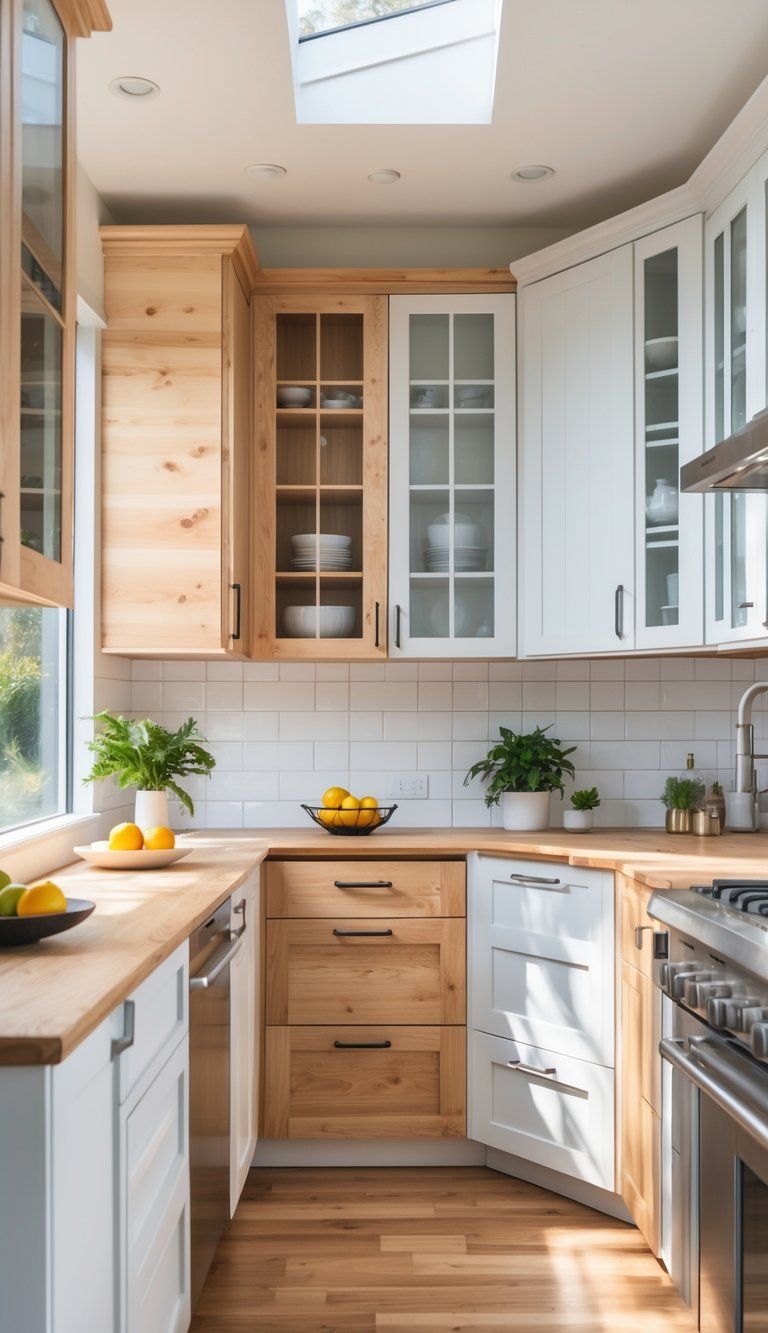
You’ll find kitchen cabinets made from all sorts of materials—solid wood, plywood, particleboard, MDF, even stainless steel. Prices usually land between $150 and $500 per linear foot for stock or semi-custom cabinets. If you want to go all out with custom cabinetry, costs can shoot up to $1,200 per linear foot. That premium price reflects the craftsmanship and quality involved. Every material brings something different to the table in terms of durability, looks, and cost.
Cabinet style can completely transform your kitchen. Maybe you’re into sleek modern designs, or you lean toward timeless traditional vibes. Understanding your options makes it easier to create a kitchen you’ll actually love and that adds value to your home. The right cabinets mix beauty with practicality, giving you a kitchen that feels both stunning and easy to use.
Overview of Kitchen Cabinet Styles
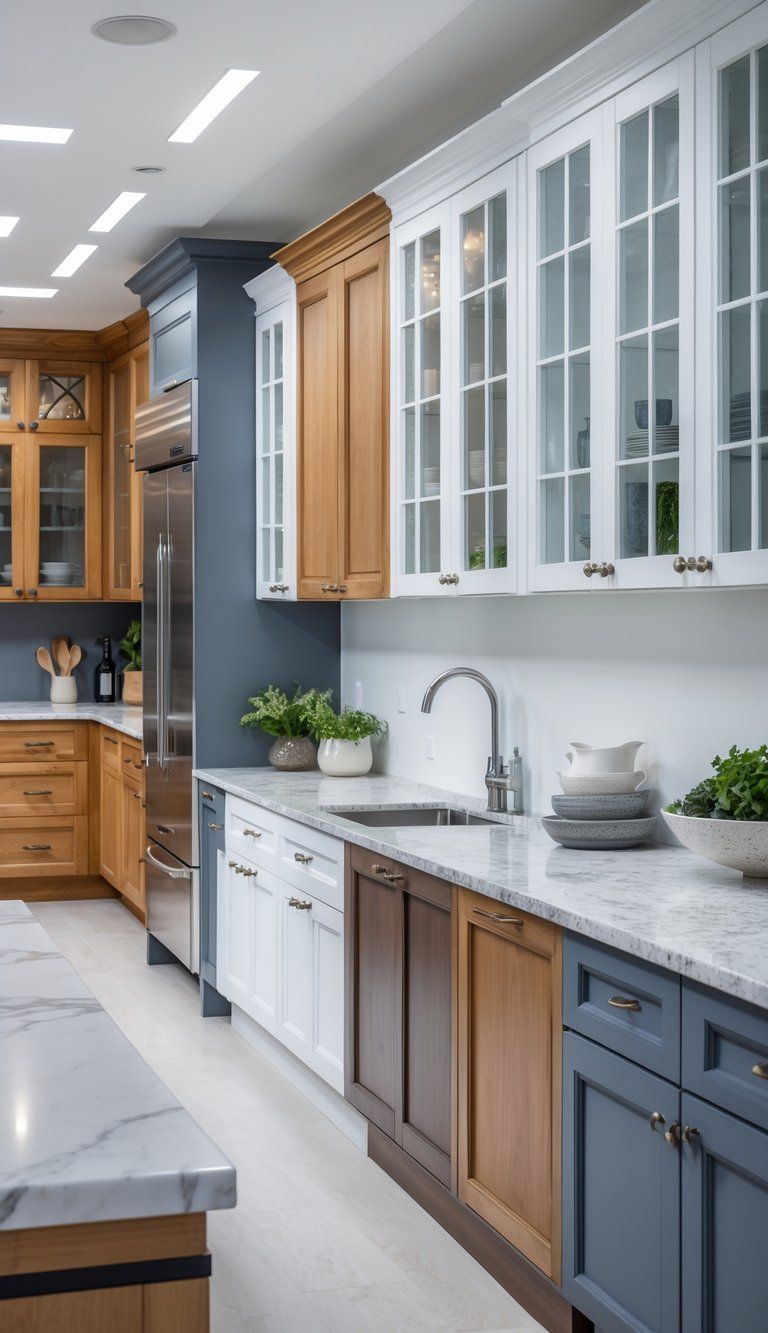
Cabinet styles shape the whole mood of your kitchen. Each one has its own design quirks that can match your taste or your home’s personality.
Shaker Cabinets
Shaker cabinets have this timeless design—clean lines, a simple five-piece door, and a recessed center panel. The style came from the Shaker religious sect in 18th-century England, who were all about simplicity and function.
Their understated look makes them insanely versatile. You’ll see them in traditional, transitional, and even modern kitchens.
Shaker cabinets are easy to keep clean, thanks to their simple lines and flat panels. You can make them your own with different hardware—maybe vintage bronze pulls for a rustic look or shiny chrome handles for something more modern.
They also look great with open shelving or kitchen hutches. Most folks go for white, gray, or natural wood finishes.
Flat-Panel and Slab Cabinets
Flat-panel (or slab) cabinets keep things simple with smooth, flat doors and zero ornate details. This style just screams “modern.”
They’re usually more affordable than fancier cabinets. Plus, cleaning is a breeze—just wipe and go.
People love slab cabinets in:
- Contemporary kitchens
- Small spaces (they don’t make the room feel crowded)
- Homes with clean architectural lines
You get a lot of finish options: high-gloss lacquer, matte paint, or wood veneer. Want to make a statement? Try dark cabinets with light countertops or flip it for contrast.
Most folks pair slab cabinets with minimalist bar pulls, or they skip handles altogether and use push-to-open hardware.
Glass-Front Cabinets
Glass-front cabinets add a little drama and depth to your kitchen. They have doors with glass panels that show off what’s inside, so you can display your favorite dishes or collectibles.
Use glass cabinets to:
- Break up long rows of solid cabinets
- Make smaller kitchens feel more open
- Add some mood lighting with in-cabinet fixtures
You can pick from clear, frosted, seeded, or patterned glass. Clear glass is best for showing off your stuff, while frosted or textured glass hides clutter but still lightens things up.
People usually use glass-front cabinets as uppers or in spots like butler’s pantries. They work best as accents, not for every cabinet.
Modern and Minimalist Cabinets
Modern and minimalist cabinets focus on clean lines, simple hardware, and a clutter-free look. You’ll often see flat-panel doors, integrated handles, and smooth, sleek materials.
The whole idea is “less is more.” These cabinets skip the fancy details and let materials and craftsmanship shine.
You’ll spot modern cabinets in:
- Handleless designs with push-to-open features
- High-gloss or ultra-matte finishes
- Bold, monochrome color schemes
- Kitchens with integrated appliances for a seamless vibe
Materials like laminate, acrylic, or thermofoil are common—they’re durable and keep colors consistent. Many modern cabinets use horizontal grain patterns for a cool, linear look.
Inside, you’ll find smart storage: organizers, full-extension drawers, and other tricks to keep things tidy without messing up the exterior’s clean lines.
Popular Kitchen Cabinet Door Designs
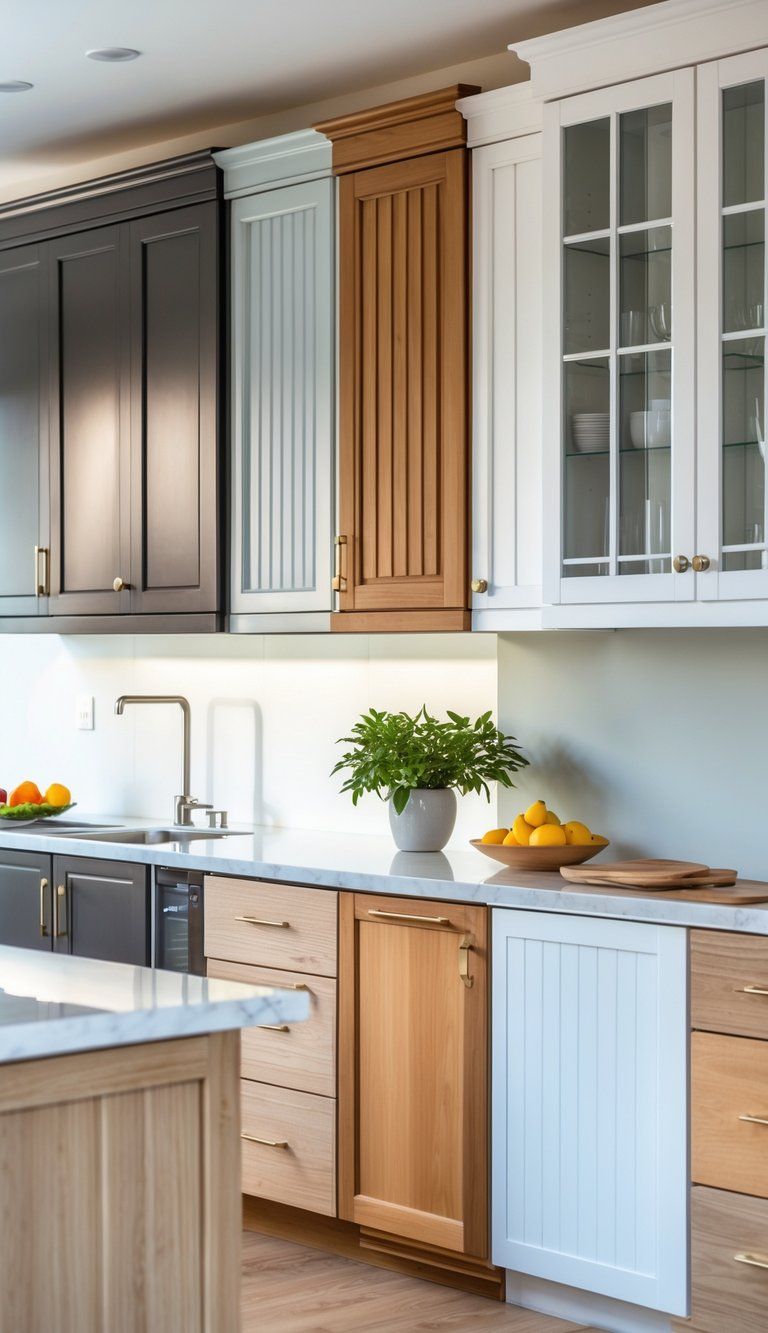
Cabinet doors set the tone for your kitchen. The style you choose changes how your kitchen looks and works.
Raised Panel Doors
Raised panel doors have a center panel that pops out above the rest of the door, often with decorative edges. They add depth and a little drama.
Arch raised panel doors, with their curved tops, fit right into traditional, farmhouse, or cottage-style kitchens. They look great with granite countertops or tile backsplashes.
You’ll see raised panel doors in styles like:
- Cathedral: Arched top
- Square: Straight lines
- Roman: Slight curve with squared corners
They cost more than simpler doors but bring a classic, upscale look. Cleaning can take a bit more effort since dust and grease love those raised edges.
Recessed Panel Doors
Recessed panel (or flat panel) doors have a center panel that sits lower than the frame. The Shaker style is the most popular version of this.
Shaker cabinets feature a five-piece door with a recessed center. Their clean lines and simple design make them fit almost any kitchen style.
Other options include:
- Mission style: Like Shaker but with chunkier frames
- Beadboard: Vertical grooves for texture
- Slab center: Completely flat center panel
Recessed panel doors are easier to clean than raised ones. They usually cost less but still add interest with their frame details.
Frameless vs. Framed Cabinets
Frameless cabinets (the European style) skip the face frame on the front of the box. That means:
- More storage space inside
- Easier access to stuff
- Sleek, modern look
- Full overlay doors that cover the whole opening
Framed cabinets use a face frame on the front of the box, which gives:
- Extra stability and support
- More door mounting options (full overlay, partial, or inset)
- A classic look for traditional homes
Your pick depends on your style, budget, and needs. Frameless cabinets usually cost more but give you more space, while framed cabinets offer more design choices.
Key Materials Used in Kitchen Cabinets
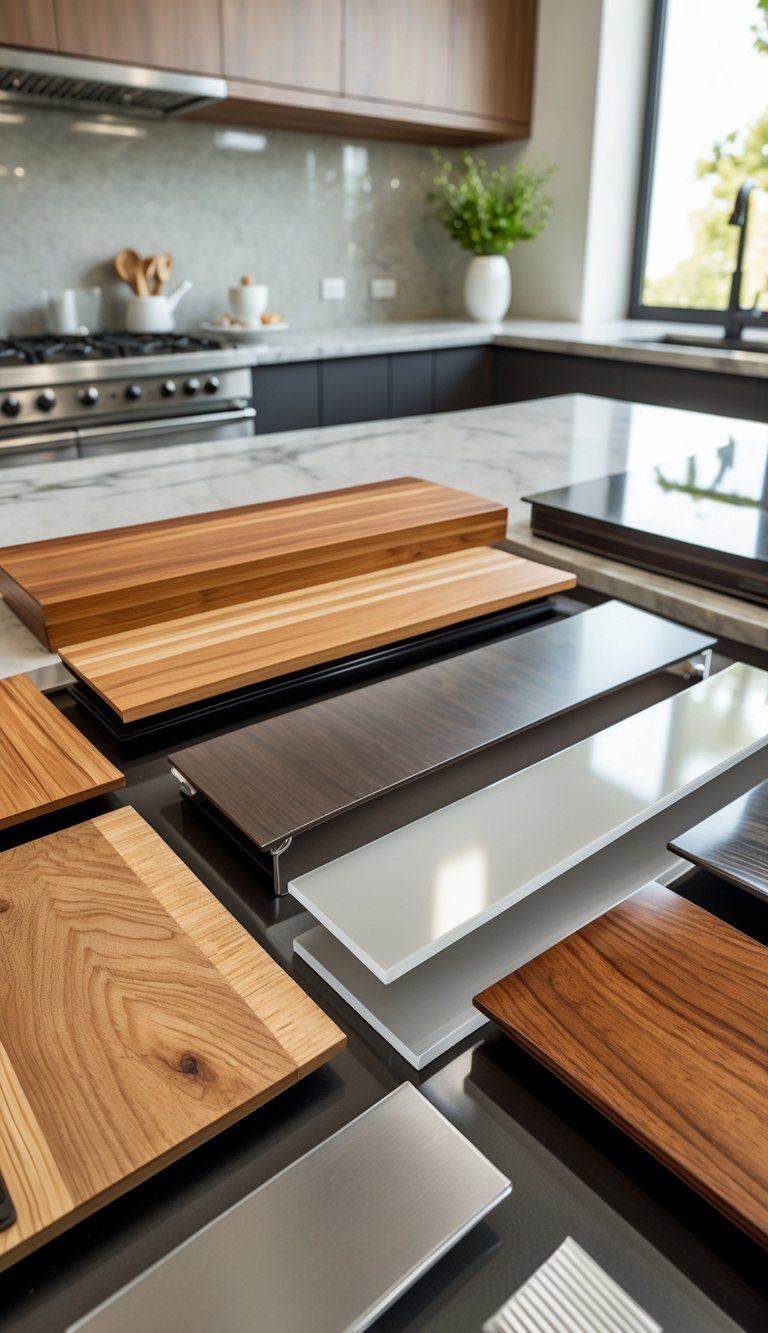
The material you choose for your cabinets really changes how they look and how long they last. Each one has its own pros and cons for cost, strength, and style.
Solid Wood
Solid wood is the gold standard—nothing beats its natural beauty and toughness. These cabinets can handle years of daily use and still look good with a little care.
Popular wood choices:
- Oak (tough with a strong grain)
- Maple (smooth and even)
- Cherry (rich, reddish, gets deeper over time)
- Walnut (dark and classy)
Solid wood cabinets show off unique grain and warm tones that never really go out of style. You can stain them to highlight the wood or paint them for a modern twist.
They’re pricey, though. Plus, you’ll need to seal or refinish them now and then to keep out moisture and avoid warping.
Plywood
Plywood is an engineered wood built from thin layers of veneer glued together, with each layer’s grain running in a different direction. That makes it super strong and stable.
Why people like plywood cabinets:
- Less likely to warp than solid wood
- Holds screws and fasteners well
- Handles moisture better
- Cheaper than solid wood
Plywood cabinets often get a thin real wood veneer on the outside, so they look like solid wood but cost less. They’re a solid pick for humid kitchens.
Most high-quality cabinets use plywood for the boxes and solid wood for the doors. That way, you get the best of both worlds.
Medium-Density Fiberboard (MDF)
MDF is made by pressing wood fibers and resin together under high pressure. The result? A dense, smooth material that’s more uniform than wood or plywood.
MDF cabinet perks:
- No knots or grain
- Takes paint beautifully
- More stable than solid wood
- Denser than regular wood
MDF is perfect for painted cabinets—no grain shows through, so the finish looks flawless. It’s a favorite for contemporary and transitional kitchens.
It’s a bit heavy, though, and if you don’t seal it well, moisture can cause problems. Higher-quality MDF holds up much better than the cheap stuff.
When you finish MDF cabinets properly, they’re pretty tough and look sharp. They usually cost somewhere in the middle.
Particleboard and Melamine
Particleboard comes from compressed wood chips and resin, making it a budget-friendly option. Melamine is just particleboard with a plastic laminate on top for better looks and durability.
Particleboard cabinet basics:
- Cheapest option around
- Light and easy to install
- Not as tough as other materials
- Needs a laminate or veneer finish
You rarely see bare particleboard—most of the time, it’s covered with melamine, laminate, or wood veneer for a nicer finish.
Melamine cabinets come in tons of colors and patterns, including wood-look designs. They’re easy to clean and don’t stain easily, which is handy in busy kitchens.
Durability is the trade-off—particleboard doesn’t hold screws as well and can swell if it gets wet. But for tight budgets, these cabinets give you decent value if you take care of them.
Specialty and Alternative Cabinet Materials
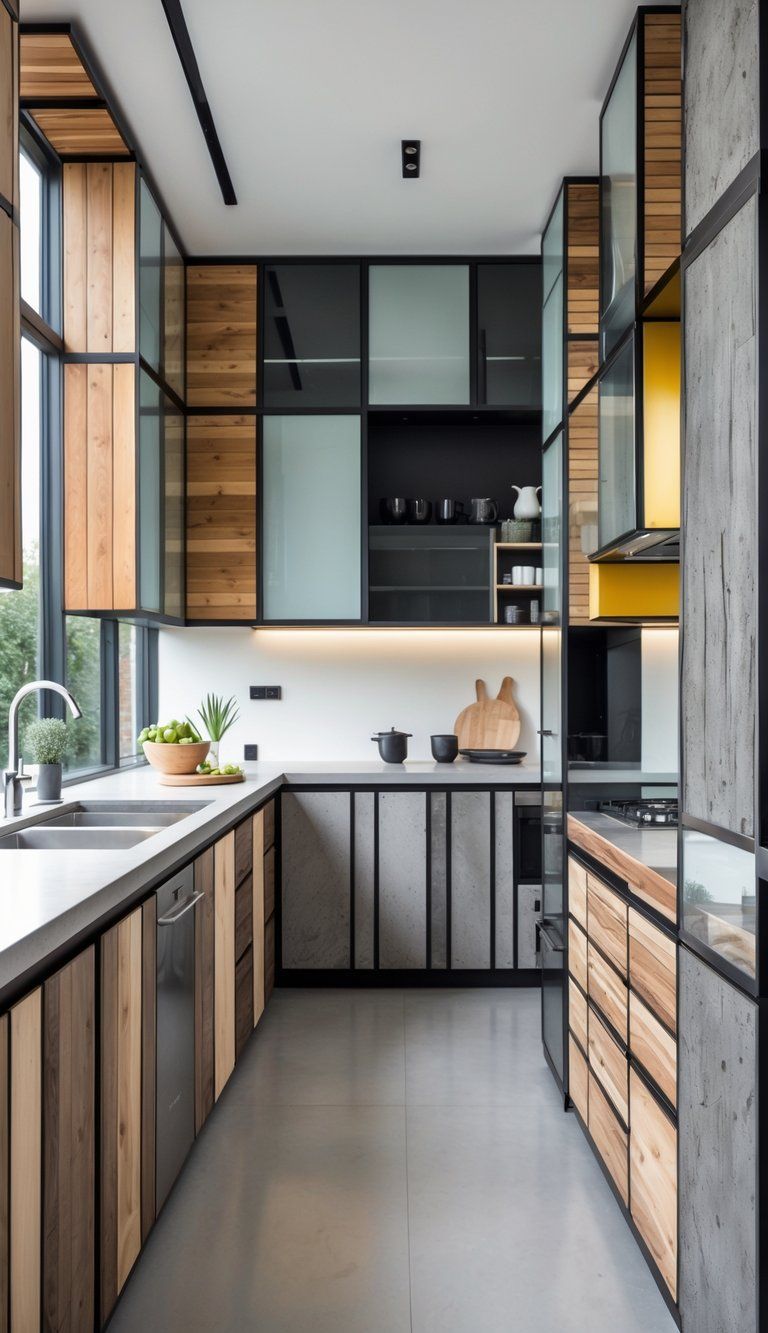
If you want something different, specialty cabinet materials might be the answer. They offer extra durability, unique looks, or just make life easier.
Laminate Cabinets
Laminate cabinets use a synthetic surface bonded to particleboard or MDF. They’re affordable and come in pretty much any color or pattern you can imagine—even ones that look like wood or stone.
The surface doesn’t absorb stains and wipes clean with just soap and water. No fancy cleaners needed!
Laminate has come a long way lately. The new stuff is tougher and looks way more realistic than it used to.
Why choose laminate cabinets:
- Great prices
- Tons of color and pattern choices
- Moisture-resistant
- Super easy to clean and keep up
A few downsides:
- You can’t refinish them if they get damaged
- Not as tough as solid wood
- Some folks think they’re not as valuable for resale
Thermofoil Cabinets
Manufacturers make thermofoil by vacuum-pressing vinyl film onto MDF. This process creates a seamless finish, and you’ll often see it in contemporary designs that favor clean, simple lines.
White thermofoil cabinets brighten up a kitchen and deliver a sleek, modern vibe. You can also find thermofoil in solid colors or wood-look finishes if you want something different.
Important note: Always keep thermofoil cabinets away from heat sources. High temperatures can warp or peel the material.
Cleaning them is a breeze—just wipe with a damp cloth and some mild detergent. Stay away from abrasive cleaners since they might scratch the surface.
Thermofoil costs less than many alternatives, but don’t expect it to last as long as solid wood or high-quality plywood cabinets.
Stainless Steel Cabinets
Stainless steel cabinets instantly give your kitchen a professional, almost restaurant-like feel. They’re crazy durable and fit right in with contemporary or industrial styles.
These cabinets handle water like a champ and won’t warp, crack, or fade. They’re also fire-resistant, so you get a little extra peace of mind near the stove.
Key benefits of stainless steel:
- Cleaning and sanitizing them is super easy
- They resist heat, moisture, and bacteria
- You can count on them to last for decades
- No worries about VOCs (volatile organic compounds)
Their reflective surface bounces light around, making even small kitchens feel bigger and more open.
The main downside? They cost more than most other materials. Fingerprints can be an issue, but special finishes help cut down on that.
Choosing the Best Cabinet Material for Your Kitchen
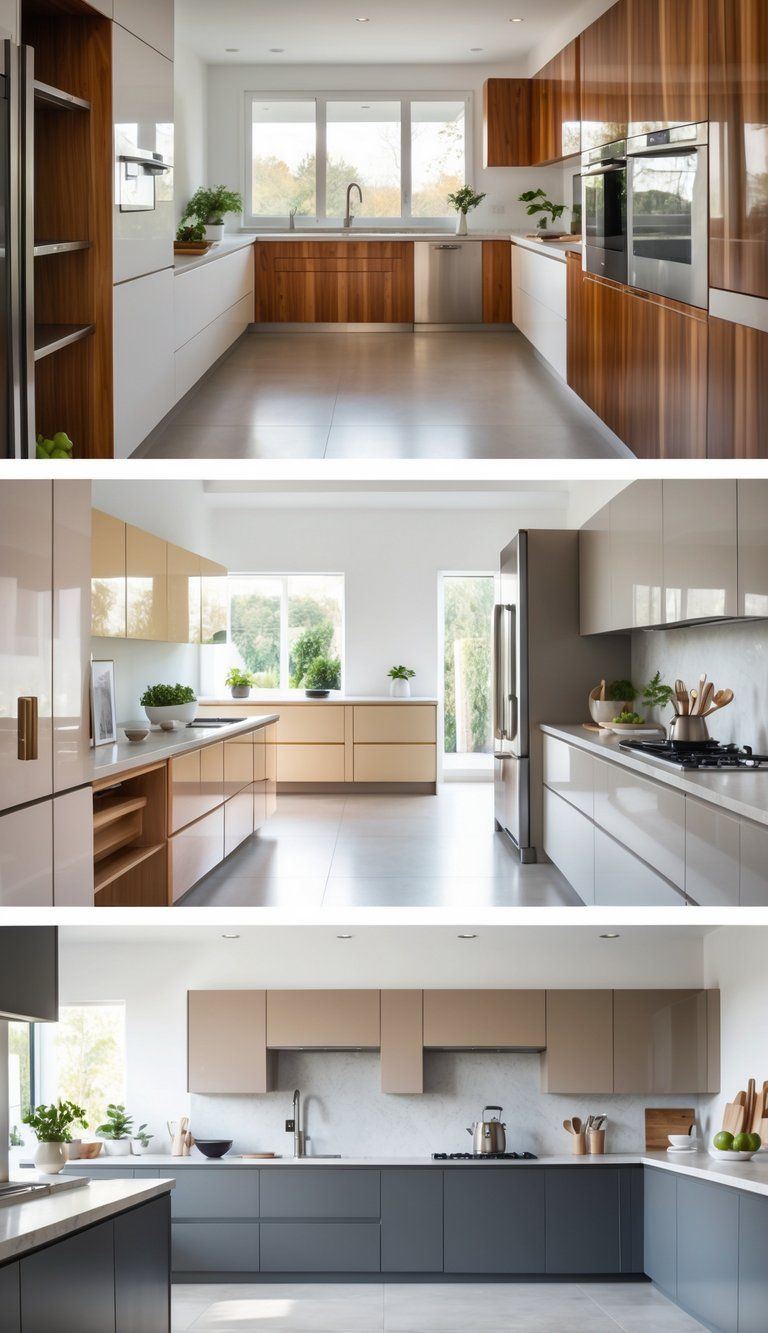
Your choice of cabinet material seriously affects how your kitchen looks, works, and holds up over time. It even shapes your cleaning habits and how much you end up spending on your remodel.
Durability and Longevity
Solid wood cabinets stand up to decades of use—think 30 years or more if you take care of them. Hardwoods like oak and maple shrug off dents and scratches better than pine.
MDF (Medium Density Fiberboard) stays stable, but it can’t handle moisture. In humid areas or near dishwashers, try moisture-resistant MDF or just pick something else.
Plywood cabinets hit a sweet spot. They resist warping, hold screws well, and work great in busy kitchens.
Stainless steel is just about indestructible. It won’t warp, crack, or fade, though you might dent it if you hit it hard enough.
Thermofoil (vinyl-wrapped) cabinets save money, but they can peel near heat and usually only last 5-10 years.
Maintenance and Care
You need to polish wood cabinets now and then, and it’s best to wipe up spills right away. Every 5-7 years, you might need to refinish them, depending on how much use they get.
Laminate cabinets are a low-maintenance dream—just use soap and water. No fancy products needed, so they’re perfect if your kitchen is always busy.
Painted cabinets show fingerprints and dirt more than stained ones. Use gentle cleaners so you don’t wear down the finish.
Skip abrasive cleaners on any cabinet. Even stainless steel can get scratched if you use harsh pads.
Quick Cleaning Guide:
- Wood: Damp cloth with mild soap, dry right away
- Laminate: All-purpose cleaner works fine
- Painted: Soft cloth and gentle cleaner
- Stainless: Use a stainless cleaner to avoid streaks
Cost and Remodeling Budget
Cabinet materials make up a huge chunk of your kitchen remodeling budget. Most people end up spending 30-40% of their total kitchen budget on cabinets.
Approximate Cost Comparison:
| Material | Cost Range (per linear foot) |
|---|---|
| Particleboard/MDF | $80-$150 |
| Plywood | $150-$250 |
| Solid Wood | $200-$500+ |
| Stainless Steel | $400-$800 |
Stock cabinets cost less than semi-custom or custom ones. If money’s tight, try using mid-range materials where everyone can see them and cheaper stuff for the hidden spots.
Don’t forget—installation adds another 15-30% to your cabinet costs. Solid wood and stainless steel need more skilled installers, so that bumps up the price too.
If you invest in better materials for high-use spots (like around the sink) and save elsewhere, you can stretch your budget and still get durability where it matters.
Comparing Cabinet Construction Options
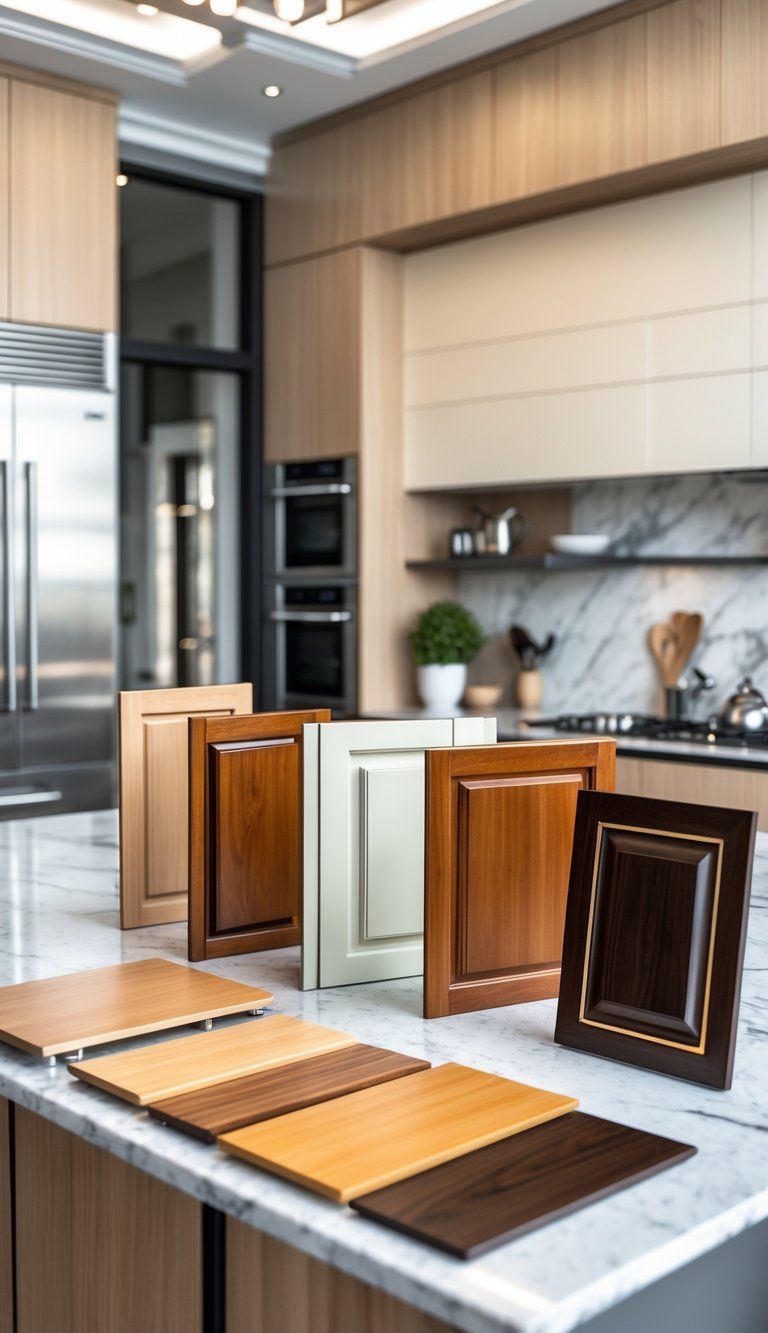
How your cabinets are built affects the price, quality, and even how well your kitchen fits your needs. It’s worth thinking about which construction option matches your priorities.
Stock Cabinets
Stock cabinets are the go-to for affordable kitchen renovations. You get standard sizes and a few style choices, and you can usually pick them up at most home improvement stores.
Why pick stock cabinets?
- Lower cost: Usually 30-50% less than custom ones
- Immediate availability: You can often bring them home the same day
- Quick installation: Standard sizes mean you finish faster
Quality can be all over the place. The best stock cabinets use plywood instead of particle board, so they hold up better. You won’t get tons of finish or hardware choices, but many brands offer popular styles like shaker doors.
The catch? You’re stuck with standard sizes, so you might waste some space in your kitchen.
Semi-Custom Cabinets
Semi-custom cabinets give you more freedom than stock but don’t cost as much as full custom. Manufacturers make these to order, so you get some say in the details.
With semi-custom, you can usually tweak:
- Depths by an inch or two
- Door styles and finishes
- Interior organization features
- Some dimension changes
These tend to use better materials than stock. Lots of semi-custom lines have solid wood doors and plywood boxes.
Expect to wait 4-8 weeks for production—longer than stock, but not as long as full custom. The price is about 10-25% more than stock, but still less than custom.
Custom Cabinets
Custom cabinets are the top-of-the-line choice. Skilled cabinet makers build them just for your kitchen, and you can ask for any size, style, or special feature you want.
Why go custom?
- Perfect fit: Built for your exact space
- Material choice: Tons of woods, finishes, and specialty materials
- Unlimited design: Any door style or unique storage solution is possible
- Superior construction: Dovetail joints, solid wood, and premium hardware are standard
Custom cabinets work wonders in tricky spaces with weird angles or heights. They’re perfect if you want something unique or a specific wood you can’t find in mass-produced cabinets.
The downside is the price—custom cabinets usually cost two to three times more than stock. Lead times are also long, often 8-12 weeks from design to installation.
Finishes and Colors for Kitchen Cabinets
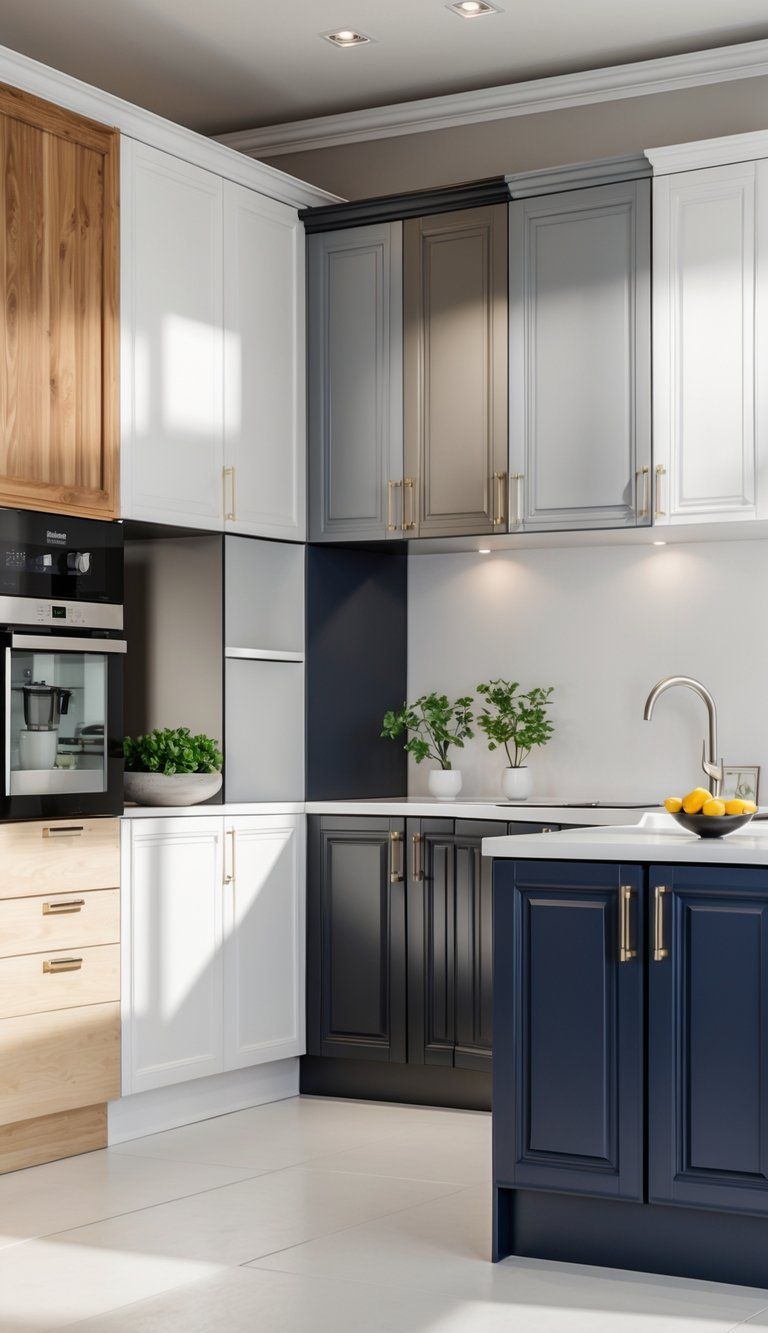
Cabinet finish and color set the mood for your whole kitchen. Depending on your pick, you can make your space feel cozy, bold, or crisp and modern.
Painted Cabinets
Painted cabinets give you a ton of versatility and a smooth, even look. You can pick from thousands of colors to match whatever vibe you’re after. Paint covers wood grain and makes cleaning pretty easy.
Popular colors include soft grays, blues, and greens for a fresh, modern feel. Navy and black bring drama, while cream and beige add warmth without going full white.
Paint works on lots of materials, including MDF, which actually takes paint really well and usually costs less than solid wood. The catch? Painted finishes can chip over time and might need touch-ups, especially in busy kitchens.
Semi-gloss or satin finishes strike a good balance between shine and practicality. They handle moisture better than matte and don’t show fingerprints as much as high-gloss.
Stained Cabinets
Stained cabinets show off the natural grain and beauty of wood. Stain sinks into the wood and highlights its unique patterns, giving you color without hiding the character.
Stain options go from light honey shades to deep espresso. Medium stains like cherry and walnut are popular since they hide dirt but still show off the wood.
Stained cabinets age gracefully. Small scratches and dings just blend in, so you don’t notice them as much as you would on painted cabinets.
Hardwoods like oak, maple, or cherry take stain evenly and look great. Softer woods might need a pre-stain conditioner to avoid blotches.
Wood Veneer Finishes
Wood veneer gives you the look of real wood with more stability and usually a lower price. Manufacturers apply thin slices of real wood over plywood or MDF.
You can finish veneer cabinets with clear coats to show their natural color, or stain them for a different look. Clear finishes range from matte to glossy, but satin is a favorite for its subtle shine and practicality.
Veneers offer consistent grain patterns and don’t warp or crack as easily. When sealed right, modern veneers are surprisingly durable and can last for decades.
If you want something bold, try exotic veneers like zebra wood or bird’s eye maple. They have striking grain patterns that add flair without extra hardware or fuss.
White Cabinets
White cabinets are still the top pick for kitchens—and honestly, it’s easy to see why. They make rooms feel brighter, help small kitchens seem bigger, and never really go out of style.
You have choices, though—bright white, soft cream, and everything in between. Pure whites look crisp and modern, while off-whites and creams add warmth and work well in traditional kitchens.
White cabinets show dirt more than darker colors, but they actually hide dust better than black. For easier upkeep, go with a pearl or satin finish instead of matte.
The flexibility of white cabinets makes them a solid bet for resale value. They act as a blank canvas for colorful decor or appliances, so you can change your kitchen’s look without swapping out the cabinets.
Smart Storage Features and Accessories
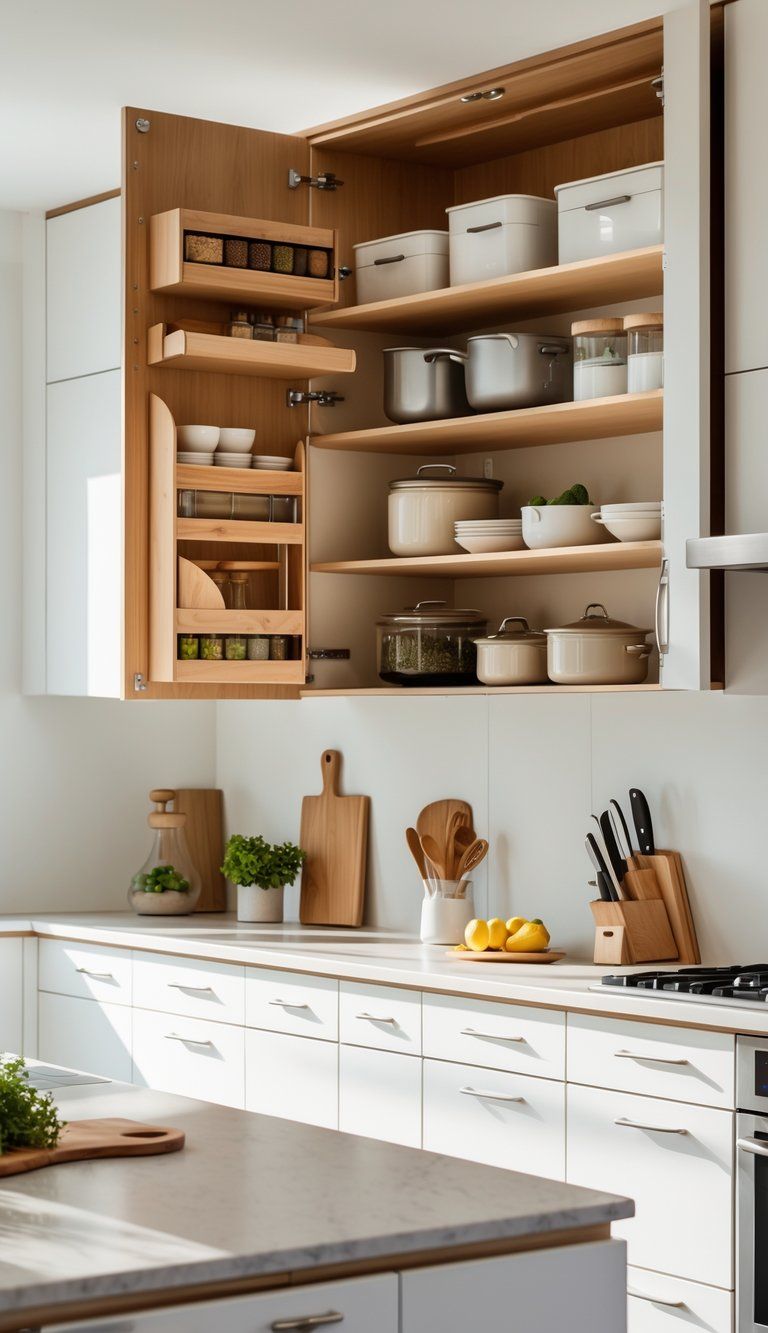
Modern cabinets come packed with smart storage ideas that make the most of every inch. These features can totally change how you use your kitchen—less clutter, more convenience.
Drawer Dividers and Inserts
Drawer dividers and inserts really level up kitchen organization. They keep utensils, cutlery, and tools neat instead of letting them pile up.
Types of drawer organizers:
- Adjustable dividers you can move around to fit your stuff
- Tiered inserts for spices or little jars
- Knife blocks that fit right inside drawers
- Peg systems to keep plates and bowls from sliding
You’ll find dividers made from wood, plastic, or metal—metal’s the toughest. Measure your drawers before you buy inserts, and think about which items you reach for most to decide where to put them.
Lazy Susans and Corner Solutions
Corner cabinets are notorious for wasting space, but you can fix that with Lazy Susans.
Popular corner cabinet solutions:
- Full-circle Lazy Susans that spin all the way around
- Half-moon shelves that pull out for easy access
- Corner drawers made to fit angled spaces
- Magic corners with shelves that slide out when you open the door
Lazy Susans are perfect for round items—spices, condiments, even small appliances. Most have lips or rails to keep things from falling off. For heavier stuff, pick a model with sturdy bearings and a solid weight rating.
Installation, Upkeep, and Repair Considerations
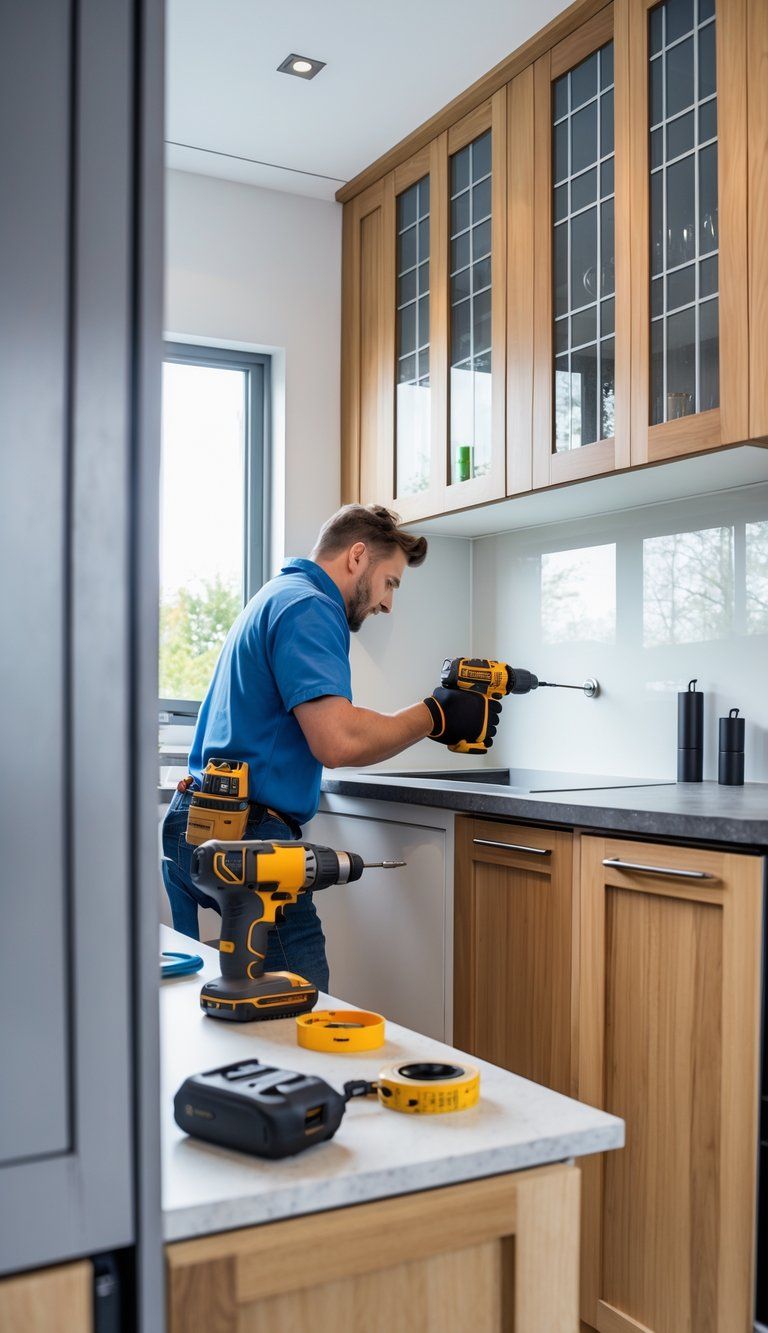
Install your kitchen cabinets carefully and take care of them to make them last. Good upkeep saves you money and keeps your kitchen looking sharp.
Cabinet Installation Basics
When you install kitchen cabinets, you really need to plan things out and grab the right tools. Measure your space—seriously, double-check—and make sure the floors and walls aren’t wonky.
Honestly, having someone help makes everything less of a headache.
For wall cabinets, start by finding and marking the wall studs. Those studs are what actually hold up the weight, so don’t skip this.
Grab a level and draw a line where the tops of the base cabinets will go.
Always put in the upper cabinets before you tackle the base ones. That way, you won’t accidentally ding up the lower cabinets while you’re wrestling with the uppers.
I’d use a temporary support board at your line to keep those cabinets steady while you work.
Shims come in handy for getting everything level and plumb. Secure the cabinets right to the studs using cabinet screws—drywall screws just won’t cut it.
Once all the cabinets are up, go ahead and add the doors, drawers, and hardware.
Repairing Common Cabinet Issues
If your cabinet doors refuse to close right, you can usually fix them by adjusting the hinges. Most newer hinges have little screws you can tweak to shift the door.
Just turn those screws a bit at a time until things line up the way you want. Sometimes it takes a few tries—don’t rush it.
Got a loose handle or knob? That’s a quick one. Grab a screwdriver and tighten the screws from inside the cabinet.
If the screw holes are stripped out, you can fill them with wood filler or even shove in some toothpicks with wood glue. Let it dry, then put the handle back in place.
Water damage happens a lot, especially in kitchens. For small water stains, I like mixing vinegar and olive oil to clean them up.
If the damage is worse, you’ll probably need to sand and refinish that spot. It’s not fun, but it does the trick.
You can hide scratches on wood cabinets with a touch-up marker that matches your cabinet color. For deeper gouges, fill them with wood filler, sand it smooth, and touch up with stain or paint.
Drawer slides sticking? Try cleaning the tracks first, then add a little silicone lubricant. If they’re really beat up, you can always pick up replacement slides at a hardware store.

